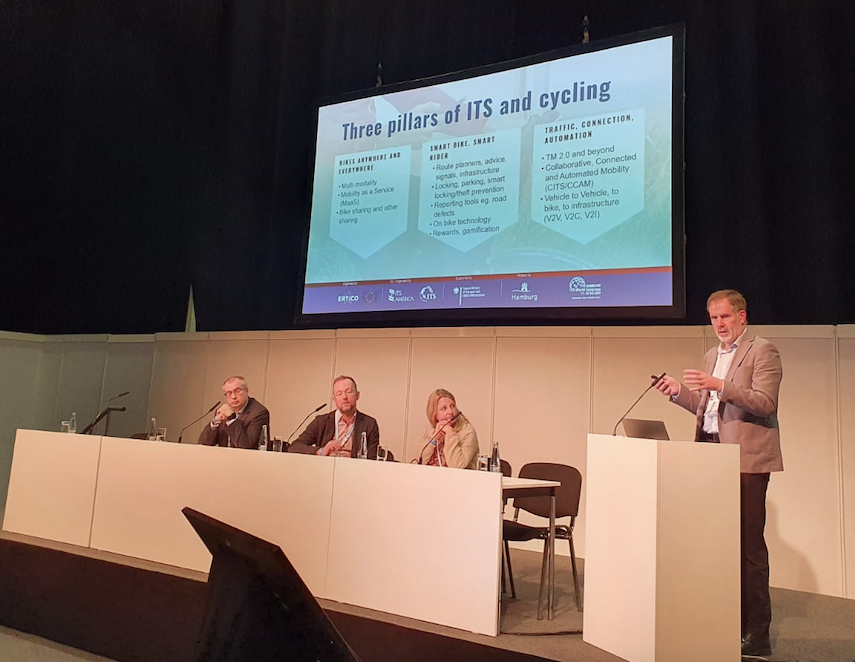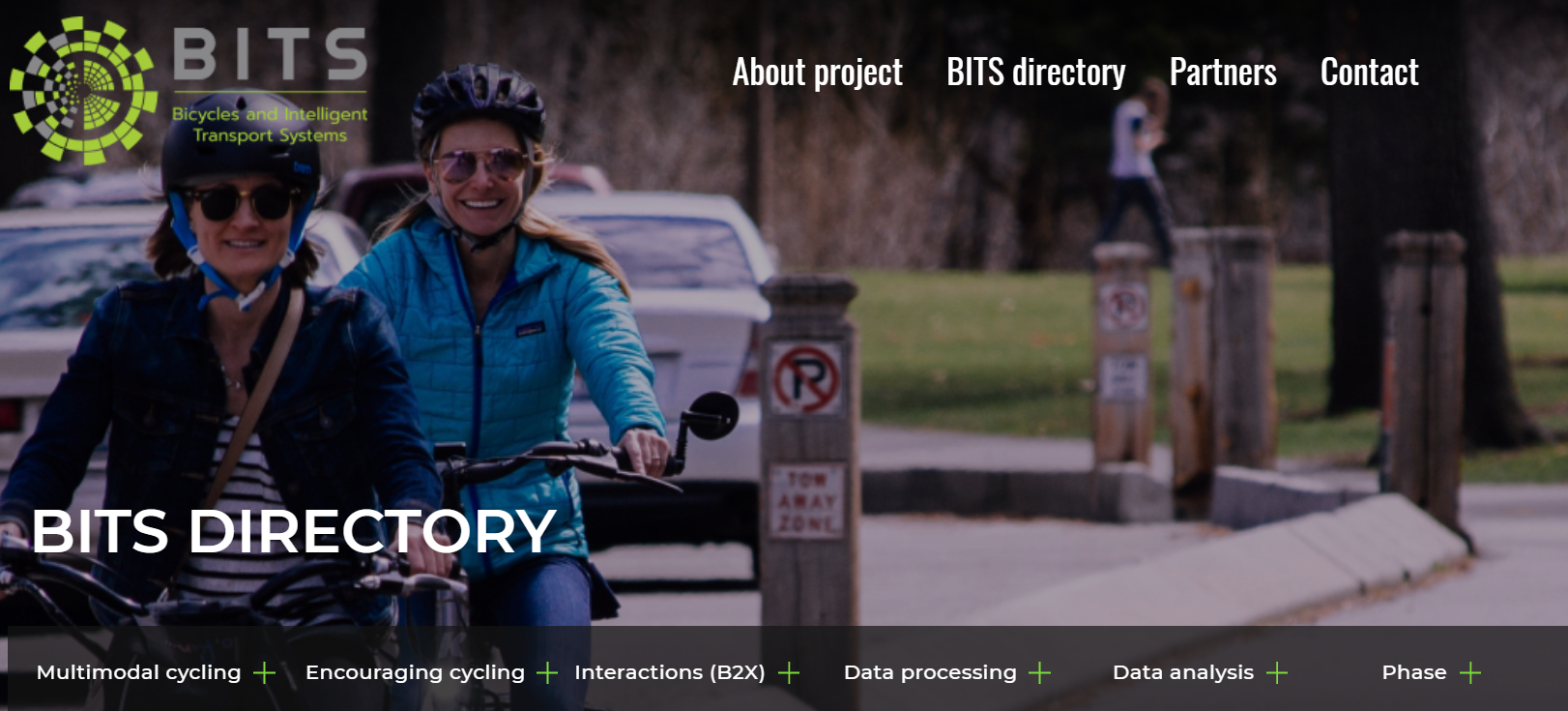BITS / Innovative / ITS / Research / Technology
Bicycles and ITS: How smart cycling is making a breakthrough in ITS
The following article was co-written by Kevin Mayne (CIE), Matteo Candelari (CIE), Ronald Jorna (Mobycon) and was originally published in Dutch on Mobiliteits Platform HERE.
The cycling industry is gaining more and more ground within the Intelligent Transport Systems (ITS) eco-system. That is quite visible when we look at cycling presence in the ITS World Congress 2021 in Hamburg.
Such Congresses are the largest events entirely dedicated to smart mobility and digitalisation of transport. Participants have the occasion to exchange ideas on smart mobility solutions among policy makers, industry experts, company leaders and the general public, discussing the latest developments in ITS, showcasing of cutting-edge technologies and innovations.

Only few years ago cycling had a very small space at ITS World Congresses, with very little consideration about the potential of digitalisation in improving the cycling experience. During the last ITS World Congress in Hamburg, cycling had many slots within the program of the conference in sessions organised by the European Commission, MaaS, ERTICO and Cycling Industries Europe.
Three Main Pillars
This reflects the wider development and awareness of the role cycling can play in mainstream ITS. The development of a cycling strategy for ITS has been on the table of cycling industry experts for the past two years and thanks to the Connected Cycling and ITS Expert Group of Cycling Industries Europe (CIE), working in partnership with the Bicycles and ITS (BITS) project, this has been drawn up. The strategy brings together all the relevant information to set a framework for bikes and ITS, focusing on three main pillars:
- Behaviourial change and mode shift: multimodality, combination between cycling and other services, bike sharing and other sharing, cooperation and coordination with MaaS.
- Smart bike and rider: new bike technologies, apps and digital mapping, traffic management systems, parking, route planning, better information to cyclists.
- Interactions: between the environment, between vehicles around, infrastructure, road safety.
These three pillars need to be considered along with two cross-cutting elements:
- Data management: collection, processing, storage, interactions, standards, regulations, privacy.
- Data analysis & use: ridership, forecasting, investment, intelligence, cost-benefit, marketing, behaviour change.
European projects like BITS have contributed to provide valuable insights for the development of this ITS cycling strategy. The use of new technologies along with an efficient management and analysis of data played a fundamental role in making cycling more attractive in the cities and municipalities of the North Sea Region, improving cycling in many aspects such as safety and reliability, speed and convenience, and comfort and experience. Providing floating bike data, smart bike parking, intelligent traffic lights, and route information for cyclists are just some examples of the implementations put in place in the areas where the BITS project is operating.

More data needed
More cycling data is urgently needed to position cycling within the multimodal transport system and to improve the system as a whole. Setting an EU framework on the standardisation and harmonisation of cycling data would give citizens the relevant information for better route planning and would help decision makers to develop a better cycling policy. More concrete steps from Member States are needed to fulfil the EC Delegated Regulation 2017/1926 which requires transport authorities and transport operators to provide the static travel and traffic data, including cycle networks, through the national access points in the required formats.
The BITS project makes a valuable contribution to making cycling data available, providing a tool, the CycleDataHub, which collects and provides access to data on bicycle use, infrastructure, health, safety, climate impact, and bicycle business performance.
The other important legacy of the BITS project is the BITS Directory. This tool aims to create a platform where industry and companies can showcase and promote their cycling-specific ITS products and services, and where municipalities can present their ITS implementations. This is one of a kind, as an ‘ITS products and services directory’ for cycling currently does not exist. It resolves a long-standing issue that there are many cycling products and services emerging in the sector, but potential suppliers, customers and investors didn’t know where to find them.
Thanks to the important contribution of the BITS project and CIE’s Industry Experts, the smart cycling strategy will turn into reality.


Ronald Jorna
‘ICT makes the transport chain more intelligent, which contributes to more efficient and sustainable transportation. As a staunch advocate for smart travel, I investigate how ICT can increase the safety and comfort of cyclists. European cooperation and knowledge sharing are important to this work. The choice for a certain modality is a trade-off between time, cost, quality of life and health.’
Senior Advisor ICT and Freight Specialist
r.jorna@mobycon.com

